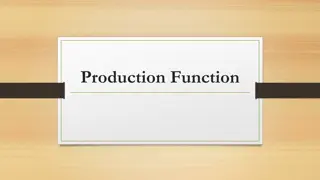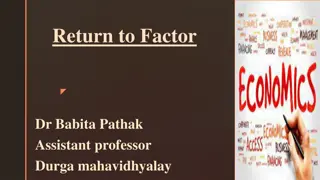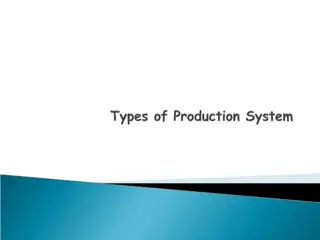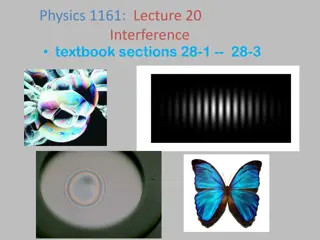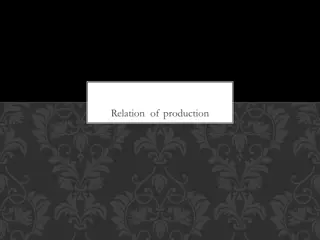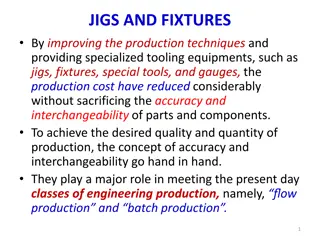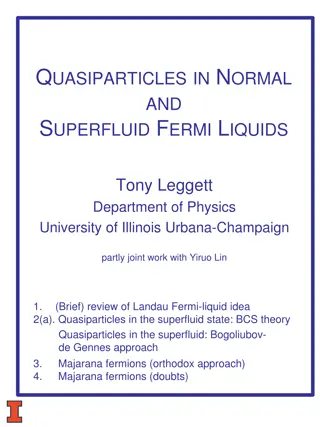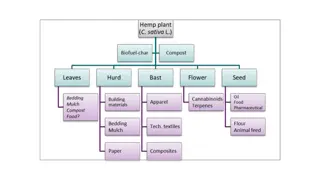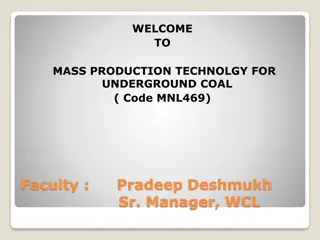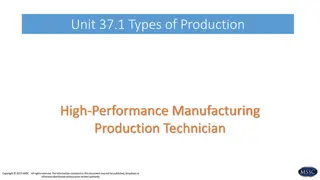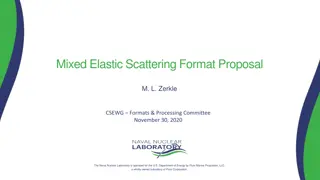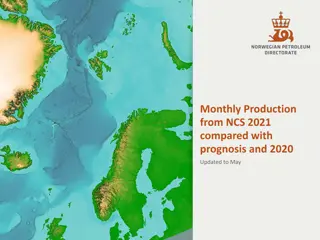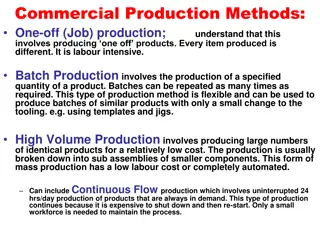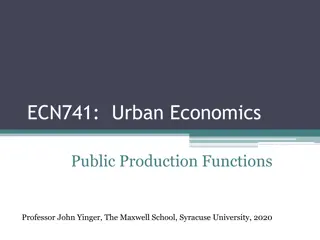Insights into Incoherent J/? Production Studies at BGU RHI Group
A study meeting at BGU RHI Group on 30th May 2023 focused on incoherent J/? production, vetoing algorithms in ECCE and ePIC environments, analysis of ion behavior, and future work plans. Detailed discussions included past studies, vetoing steps, objectives, and initial results regarding incoherent events. Simulations using ePIC and observations from BeAGLE-generated events were key highlights. Challenges in simulating ions through DDSIM and EICRecon were also noted.
Download Presentation

Please find below an Image/Link to download the presentation.
The content on the website is provided AS IS for your information and personal use only. It may not be sold, licensed, or shared on other websites without obtaining consent from the author.If you encounter any issues during the download, it is possible that the publisher has removed the file from their server.
You are allowed to download the files provided on this website for personal or commercial use, subject to the condition that they are used lawfully. All files are the property of their respective owners.
The content on the website is provided AS IS for your information and personal use only. It may not be sold, licensed, or shared on other websites without obtaining consent from the author.
E N D
Presentation Transcript
Incoherent J/? Production Zvi Citron, Michael Pitt, Eden Mautner eA Study Meeting BGU RHI Group 30.5.2023
Overview 1. Reminder. 2. Past studies - Vetoing Incoherent VM production in ECCE. (arXiv:2108.01694) 3. Vetoing Incoherent VM production in ePIC. (This study) 4. Initial vetoing results. 5. Detour BeAGLE/eStarLight analysis of Ion s behavior. 6. Future work.
Reminder ?/? production events can be found in eA collision, or in our case, ePb collision. Both coherent and incoherent ?/? can be produced In incoherent events the proccess is in the form of ? + ?? ? + ?/? + ? In coherent events the proccess is in the form of ? + ?? ? + ?/? + ?? Incoherent Coherent
Past Studies with ECCE Objective: Creating a vetoing algorithm to significantly reduce the signals from events with incoherent ?/? production in ePb collisions. This was originaly proposed for ECCE geometry: arXiv:2108.01694 Vetoing Steps: Veto.1: No activity other than ? and ?/? in the main detector ??? ? ) ; ( ? < 4 and ??> 100 Veto.2: Veto.1 and no Neutron in ZDC; Veto.3: Veto.2 and no Proton in RP; Veto.4: Veto.3 and no Proton in OMDs; Veto.5: Veto.4 and no Proton in B0; Veto.6 Veto.5 and no Photon in B0; Veto.7: Veto.6 and no Photon with ? > 50 ??? in ZDC.
Vetoing Incoherent Events in ePIC Objectives: Short term: Rejection of Incoherent proccesses using ePIC simulation. Long Term : Extending event selection to low Q2 region ( 3 < log ?2 < 2) Data: We used BeAGLE generated events (Produced by Mark), where we started with events where ?/? ? ?+? . Note: This was done so we don t have to worry (for now) about the electron originating from the electron beam. Current Vetoing Steps: Veto.1: No activity other than ? and ?/? ( ?+? ) in the main detector ( ? < 4) ; Veto.2: Veto.1 and no signal in the ZDC ( ????? ??? ???> 100 ???); Veto.3: Veto.2 and no signal in RP; Veto.4: Veto.3 and no signal in OMDs; Veto.5: Veto.4 and no signal in B0 tracker; Veto.6: Veto.5 and no signal in B0 ECAL.
Initial Results Vetoing Steps: Veto.1: No activity other than ? and ?/? ( ?+? ) in the main detector ( ? < 4) ; Veto.2: Veto.1 and no signal in the ZDC ( ????? ??? ???> 100 ???); Veto.3: Veto.2 and no Proton in RP; Veto.4: Veto.3 and no signal in OMDs; Veto.5: Veto.4 and no signal in B0 tracker; Veto.6: Veto.5 and no signal in B0 ECAL. Unexpected: Proton signal in RP appear in 100% of the events.
Simulating Ions Through DDSIM and EICRecon Difficulties: Simulation time is around 5 min/event. (When Central Beampipe is removed it takes 2 min/event) All events contain reconstructed tracks (ForwardRomanPotRecParticles), resulting in 100% background rejection Objectives: Look at Ion characteristics to understand which Ions generate signals in forward detectors. Examine simulation results of Coherent?/? with simulated Ions (eStarLight).
Ions Behavior Let s look at the BeAGLE output data for the Ion s generated in the Incoherent production process. Ions Total AAA Distribution Close-Up Region * Events with Ions PDG of 1000822080 don t have a change in their net charge during the Incoherent VM production process. The Hadron beam initially consists of Pb Ion s with Z = 082, A = 208. Therefore, PDG = 1000822080. Net charge does not change Ion s that remain with PDG = 1000822080 discribe a Pb Ion that was excited in the ePb collision.
Ions Behavior We expect the Ion s that don t have a change in their net charge, to continue with the Hadron beam, and stop at 100 meters. From the ePIC simulation we notice a different behavior: What we expected. Interesting.... Seems like most of these Ions don t reach the end of the beampipe.
Ions Behavior We can see that for all events we have hits in the RP.
eStarLight Ions Behavior Since the results from the BeAGLE Ion s seem odd, we decided to use data of Coherent?/? prodcution, generated from eStarLight, to check that there is indeed no signal in the RP. Steps: Produced events using eStarLight Simulated through ePIC geometry (DDSIM) Reconstruction Analyzing the Pb Ions behavior
eStarLight Reconstructed Ions Behavior Since we are now looking at coherent event s we expect: All the Pb Ion s to reach the end of the world volume (ePIC geometry) at 100 meters. No tracks in the RP s Once again, not what we expected
Track Kinematics Reconstructed by RP in Coherent Events Since we are now looking at coherent event s we expect all the Pb Ion s to reach the end of the beampipe (z = 100 m). RP particles reconstructed energy Particles Energy GeV The energy scale of the reconstructed particles seem to be to high according to the RP energy acceptence.
Conclusions There is 100% signal rejection using the forward RP Not sure why this is the case (looking into it). Some Ion s have characteristics that I did not expect. Particles energy, reconstructed in the RP, don t match the RP energy acceptance plot (produced by Michael). Questions: How can I know if the Ion s are simulated properly through ePIC? Any other suggestions?


